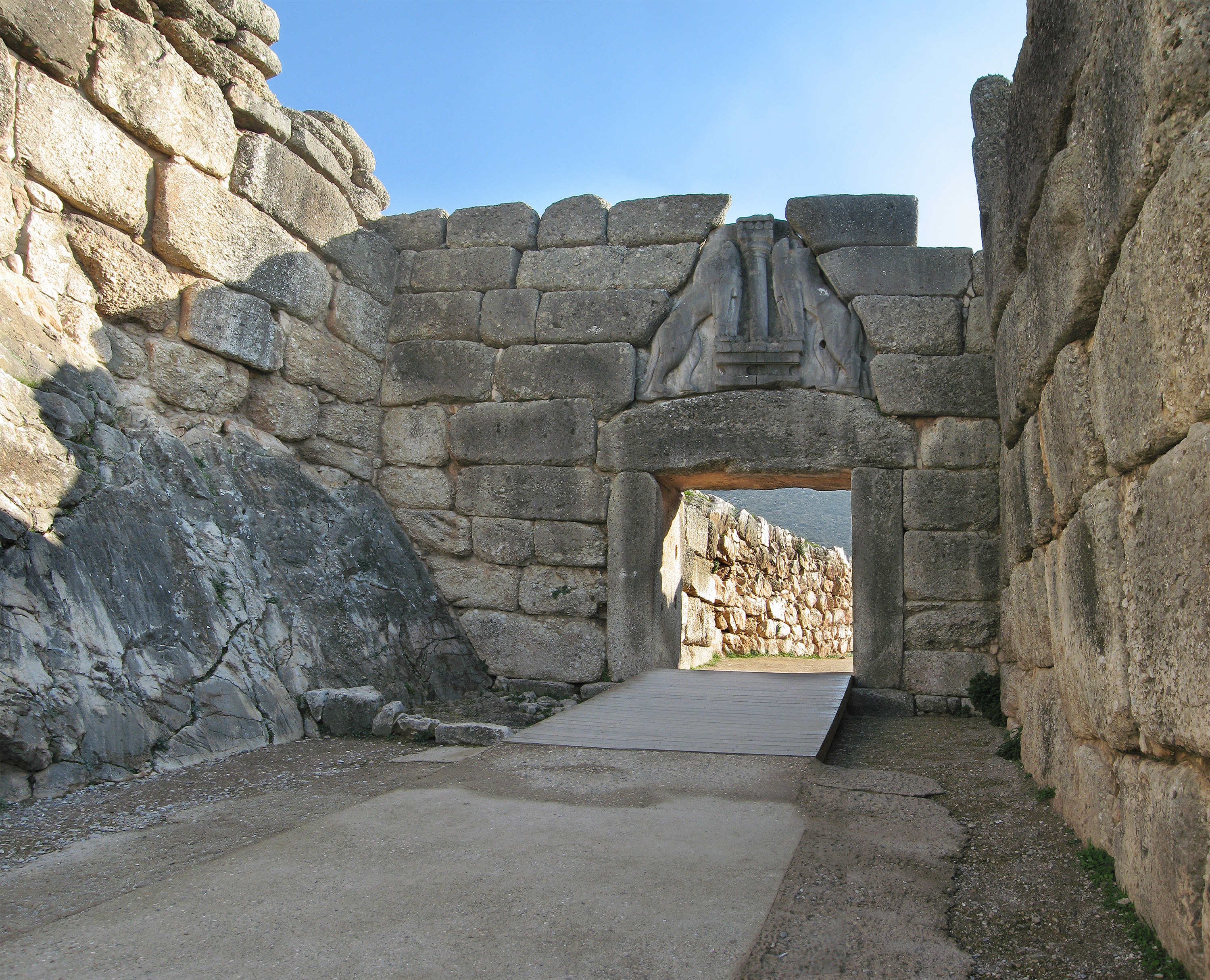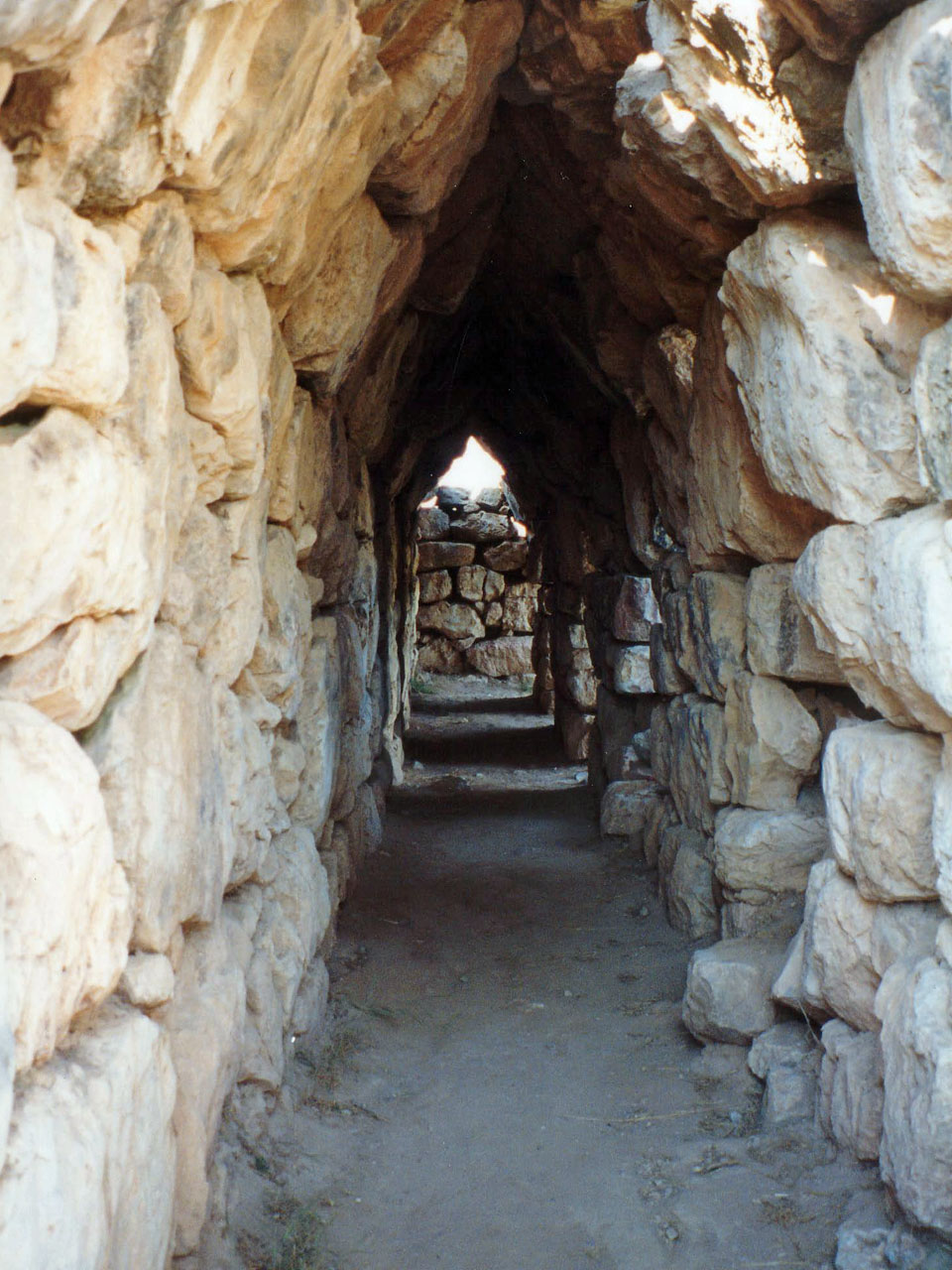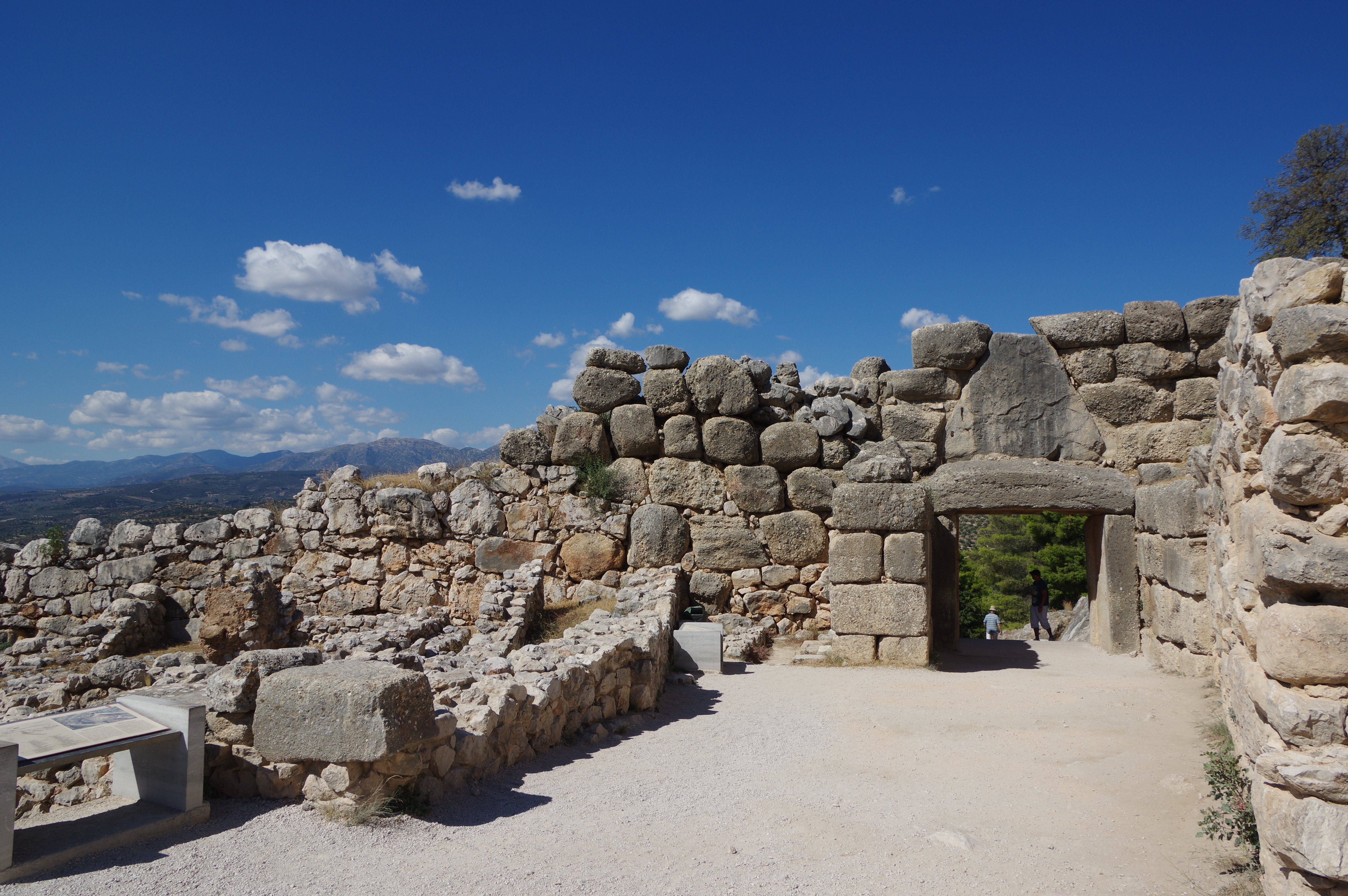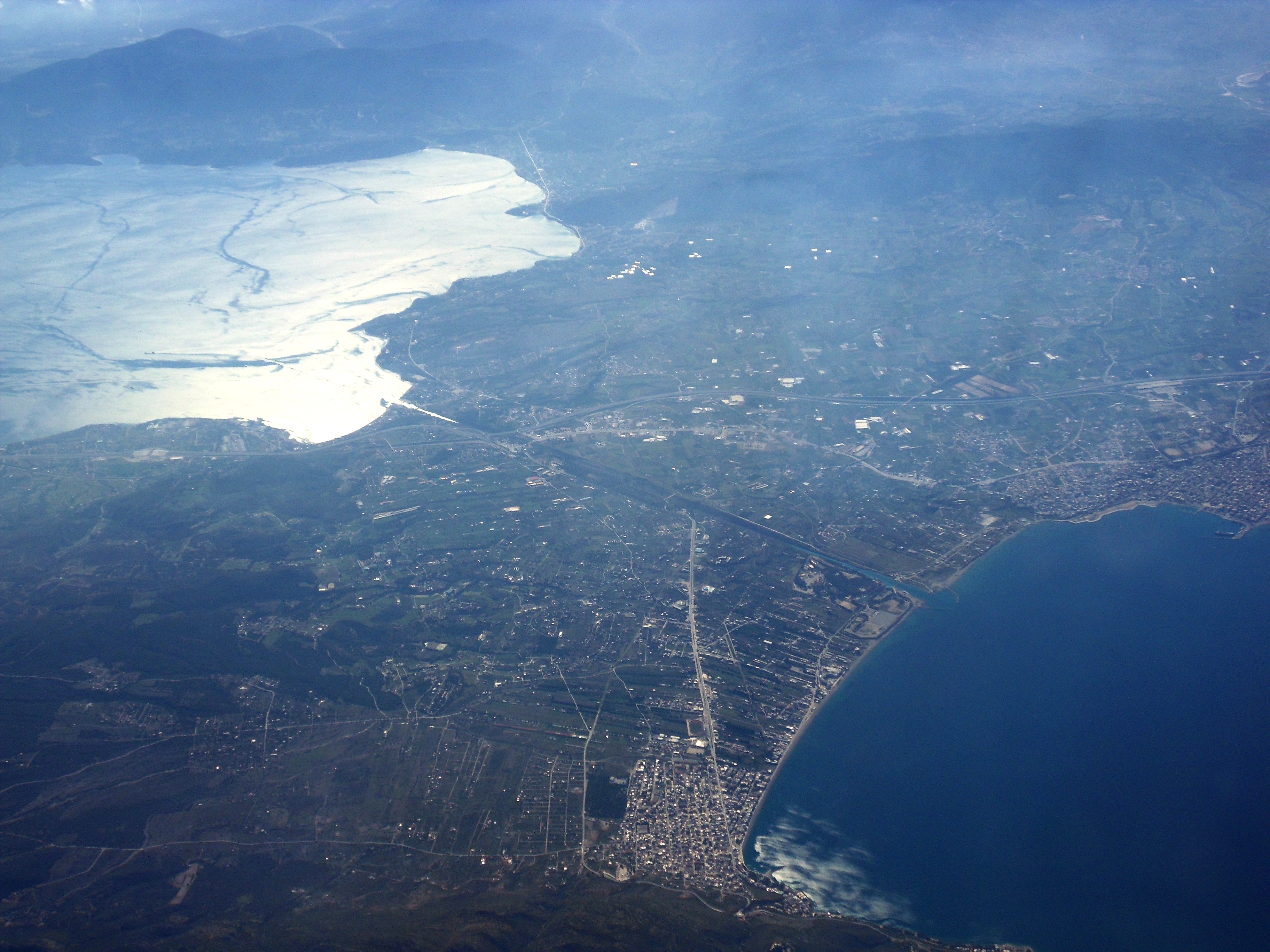|
Mycenae
Mycenae ( ; ; or , ''Mykē̂nai'' or ''Mykḗnē'') is an archaeological site near Mykines, Greece, Mykines in Argolis, north-eastern Peloponnese, Greece. It is located about south-west of Athens; north of Argos, Peloponnese, Argos; and south of Corinth. The site is inland from the Saronic Gulf and built upon a hill rising above sea level. In the second millennium BC, Mycenae was one of the major centres of Greek civilisation, a military stronghold which dominated much of southern Greece, Crete, the Cyclades and parts of southwest Anatolia. The period of History of Greece, Greek history from about 1600 BC to about 1100 BC is called Mycenaean Greece, Mycenaean in reference to Mycenae. At its peak in 1350 BC, the citadel and lower town had a population of 30,000 and an area of . The first correct identification of Mycenae in modern literature was in 1700, during a survey conducted by the Venetian engineer Francesco Vandeyk on behalf of Francesco Grimani, the Provveditore Ge ... [...More Info...] [...Related Items...] OR: [Wikipedia] [Google] [Baidu] |
Mycenaean Greece
Mycenaean Greece (or the Mycenaean civilization) was the last phase of the Bronze Age in ancient Greece, spanning the period from approximately 1750 to 1050 BC.. It represents the first advanced and distinctively Greek civilization in mainland Greece with its palatial states, urban organization, works of art, and writing system.. The Mycenaeans were mainland Greek peoples who were likely stimulated by their contact with insular Minoan Crete and other Mediterranean cultures to develop a more sophisticated sociopolitical culture of their own. The most prominent site was Mycenae, after which the culture of this era is named. Other centers of power that emerged included Pylos, Tiryns, and Midea in the Peloponnese, Orchomenos, Thebes, and Athens in Central Greece, and Iolcos in Thessaly. Mycenaean settlements also appeared in Epirus, Macedonia, on islands in the Aegean Sea, on the south-west coast of Asia Minor, and on Cyprus, while Mycenaean-influenced settlements appear ... [...More Info...] [...Related Items...] OR: [Wikipedia] [Google] [Baidu] |
Treasury Of Atreus
The Treasury of Atreus or Tomb of Agamemnon is a large ''tholos'' or beehive tomb constructed between 1300 and 1250 BCE in Mycenae, Greece. It is the largest and most elaborate ''Tholos (architecture), tholos'' tomb known to have been constructed in the Aegean civilization, Aegean Bronze Age, and one of the last to have been built in the Argolid. The main tomb consisted of a circular burial chamber, or ''thalamos'', topped with a Corbel, corbelled dome. This dome was the largest in the world until the Roman Empire, Roman period, and remains the world's largest corbelled dome. Originally, the façade was decorated with marble columns and sculptures, which used marble from the Mani Peninsula in the southern Peloponnese. Its artwork has been suggested to have been inspired by that of Minoan civilization, Minoan Crete and of Ancient Egypt. Little is known of the persons who might have been buried in the tomb: the identification with the mythical Atreus and Agamemnon likely dates to ... [...More Info...] [...Related Items...] OR: [Wikipedia] [Google] [Baidu] |
Lion Gate
The Lion Gate () is the popular modern name for the main entrance of the Bronze Age citadel of Mycenae in Southern Greece. It was erected during the thirteenth century BC, around 1250 BC, in the northwestern side of the acropolis. In modern times, it was named after the relief sculpture of two lions or lionesses in a heraldic pose that stands above the entrance.. The gate is the sole surviving monumental piece of Mycenaean Greece, Mycenaean sculpture, as well as the largest surviving sculpture in the Bronze Age Aegean Sea, Aegean. It is the only monument of Bronze Age Greece to bear an iconographic motif that survived without being buried underground. It is the only relief image that was described in the literature of classical antiquity, such that it was well known prior to modern archaeology. The Lion Gate is also a testimony of the History of lions in Europe, presence of lions in Europe and Greece, before their disappearance in the late stages of Ancient history. Entrance ... [...More Info...] [...Related Items...] OR: [Wikipedia] [Google] [Baidu] |
History Of Greece
The history of Greece encompasses the history of the territory of the modern nation-state of Greece as well as that of the Greek people and the areas they inhabited and ruled historically. The scope of Greek habitation and rule has varied throughout the ages and as a result, the history of Greece is similarly elastic in what it includes. Timeline Generally, the history of Greece is divided into the following periods: *Prehistoric Greece: ** Paleolithic Greece, starting circa 3.3 million years ago and ending in 20,000 BC. Significant geomorphological and climatic changes occurred in the modern Greek area which were definitive for the development of fauna and flora and the survival of ''Homo sapiens'' in the region. **Mesolithic Greece, starting in 13,000 BC and ending around 7,000 BC, was a period of long and slow development of primitive human "proto-communities". ** Neolithic Greece, beginning with the establishment of agricultural societies around 7,000 BC and ending BC, wa ... [...More Info...] [...Related Items...] OR: [Wikipedia] [Google] [Baidu] |
Tiryns
Tiryns ( or ; Ancient Greek: Τίρυνς; Modern Greek: Τίρυνθα) is a Mycenaean archaeological site in Argolis in the Peloponnese, and the location from which the mythical hero Heracles was said to have performed his Twelve Labours. It lies south of Mycenae. Tiryns was a hill fort with occupation ranging back seven thousand years, from before the beginning of the Bronze Age. It reached its height of importance between 1400 and 1200 BC, when it became one of the most important centers of the Mycenaean world, and in particular in Argolis. Its most notable features were its palace, its Cyclopean tunnels and especially its walls, which gave the city its Homeric epithet of "mighty walled Tiryns". Tiryns became associated with the myths surrounding Heracles, as the city was the residence of the hero during his labors, and some sources cite it as his birthplace. The famous megaron of the palace of Tiryns has a large reception hall, the main room of which had a throne place ... [...More Info...] [...Related Items...] OR: [Wikipedia] [Google] [Baidu] |
Cyclopean Masonry
Cyclopean masonry is a type of stonework found in Mycenaean architecture, built with massive limestone boulders, roughly fitted together with minimal clearance between adjacent stones and with clay mortar or no use of mortar. The boulders typically seem unworked, but some may have been worked roughly with a hammer and the gaps between boulders filled in with smaller chunks of limestone. The most famous examples of Cyclopean masonry are found in the walls of Mycenae and Tiryns, and the style is characteristic of Mycenaean fortifications. Similar styles of stonework are found in other cultures and the term has come to be used to describe typical stonework of this sort. The term comes from the belief of classical Greeks that only the mythical Cyclopes had the strength to move the enormous boulders that made up the walls of Mycenae and Tiryns. Pliny's ''Natural History'' reported the tradition, attributed to Aristotle, that the Cyclopes were the inventors of masonry towers, giving ... [...More Info...] [...Related Items...] OR: [Wikipedia] [Google] [Baidu] |
Late Bronze Age Collapse
The Late Bronze Age collapse was a period of societal collapse in the Mediterranean basin during the 12th century BC. It is thought to have affected much of the Eastern Mediterranean and Near East, in particular Egypt, Anatolia, the Aegean, eastern Libya, and the Balkans. The collapse was sudden, violent, and culturally disruptive for many Bronze Age civilizations, creating a sharp material decline for the region's previously existing powers. The palace economy of Mycenaean Greece, the Aegean region, and Anatolia that characterized the Late Bronze Age disintegrated, transforming into the small isolated village cultures of the Greek Dark Ages, which lasted from to , and were followed by the better-known Archaic Age. The Hittite Empire spanning Anatolia and the Levant collapsed, while states such as the Middle Assyrian Empire in Mesopotamia and the New Kingdom of Egypt survived in weakened forms. Other cultures such as the Phoenicians enjoyed increased autonomy and pow ... [...More Info...] [...Related Items...] OR: [Wikipedia] [Google] [Baidu] |
Bronze Age Europe
The European Bronze Age is characterized by bronze artifacts and the use of bronze implements. The regional Bronze Age succeeds the Neolithic Europe, Neolithic and Chalcolithic Europe, Copper Age and is followed by the Iron Age Europe, Iron Age. It starts with the Aegean Bronze Age in 3200 BC and spans the entire 2nd millennium BC (including the Únětice culture, Ottomány culture, British Bronze Age, Argaric culture, Nordic Bronze Age, Tumulus culture, Nuragic civilization, Nuragic culture, Terramare culture, Urnfield culture and Lusatian culture), lasting until c. 800 BC in central Europe. Arsenical bronze was produced in some areas from the 4th millennium BC onwards, prior to the introduction of tin bronze. Tin bronze foil had already been produced in southeastern Europe on a small scale in the Chalcolithic Europe, Chalcolithic era, with examples from Pločnik (archaeological site), Pločnik in Serbia dated to , as well as 14 other artefacts from Bulgaria and Serbia dated to b ... [...More Info...] [...Related Items...] OR: [Wikipedia] [Google] [Baidu] |
Greece
Greece, officially the Hellenic Republic, is a country in Southeast Europe. Located on the southern tip of the Balkan peninsula, it shares land borders with Albania to the northwest, North Macedonia and Bulgaria to the north, and Turkey to the east. The Aegean Sea lies to the east of the Geography of Greece, mainland, the Ionian Sea to the west, and the Sea of Crete and the Mediterranean Sea to the south. Greece has the longest coastline on the Mediterranean Basin, spanning List of islands of Greece, thousands of islands and nine Geographic regions of Greece, traditional geographic regions. It has a population of over 10 million. Athens is the nation's capital and List of cities and towns in Greece, largest city, followed by Thessaloniki and Patras. Greece is considered the cradle of Western culture, Western civilisation and the birthplace of Athenian democracy, democracy, Western philosophy, Western literature, historiography, political science, major History of science in cl ... [...More Info...] [...Related Items...] OR: [Wikipedia] [Google] [Baidu] |
Peloponnese
The Peloponnese ( ), Peloponnesus ( ; , ) or Morea (; ) is a peninsula and geographic region in Southern Greece, and the southernmost region of the Balkans. It is connected to the central part of the country by the Isthmus of Corinth land bridge which separates the Gulf of Corinth from the Saronic Gulf. From the late Middle Ages until the 19th century, the peninsula was known as the Morea, a name still in colloquial use in its demotic form. The peninsula is divided among three administrative regions: most belongs to the Peloponnese region, with smaller parts belonging to the West Greece and Attica regions. Geography The Peloponnese is a peninsula located at the southern tip of the mainland, in area, and constitutes the southernmost part of mainland Greece. It is connected to the mainland by the Isthmus of Corinth, where the Corinth Canal was constructed in 1893. However, it is also connected to the mainland by several bridges across the canal, including two submers ... [...More Info...] [...Related Items...] OR: [Wikipedia] [Google] [Baidu] |
Crete
Crete ( ; , Modern Greek, Modern: , Ancient Greek, Ancient: ) is the largest and most populous of the Greek islands, the List of islands by area, 88th largest island in the world and the List of islands in the Mediterranean#By area, fifth largest island in the Mediterranean Sea, after Sicily, Sardinia, Cyprus, and Corsica. Crete is located about south of the Peloponnese, and about southwest of Anatolia. Crete has an area of and a coastline of 1,046 km (650 mi). It bounds the southern border of the Aegean Sea, with the Sea of Crete (or North Cretan Sea) to the north and the Libyan Sea (or South Cretan Sea) to the south. Crete covers 260 km from west to east but is narrow from north to south, spanning three longitudes but only half a latitude. Crete and a number of islands and islets that surround it constitute the Region of Crete (), which is the southernmost of the 13 Modern regions of Greece, top-level administrative units of Greece, and the fifth most popu ... [...More Info...] [...Related Items...] OR: [Wikipedia] [Google] [Baidu] |
Athens
Athens ( ) is the Capital city, capital and List of cities and towns in Greece, largest city of Greece. A significant coastal urban area in the Mediterranean, Athens is also the capital of the Attica (region), Attica region and is the southernmost capital on the European mainland. With its urban area's population numbering over 3.6 million, it is the List of urban areas in the European Union, eighth-largest urban area in the European Union (EU). The Municipality of Athens (also City of Athens), which constitutes a small administrative unit of the entire urban area, had a population of 643,452 (2021) within its official limits, and a land area of . Athens is one of the List of oldest continuously inhabited cities, world's oldest cities, with its recorded history spanning over 3,400 years, and its earliest human presence beginning somewhere between the 11th and 7th millennia BCE. According to Greek mythology the city was named after Athena, the ancient Greek goddess of wisdom, ... [...More Info...] [...Related Items...] OR: [Wikipedia] [Google] [Baidu] |







